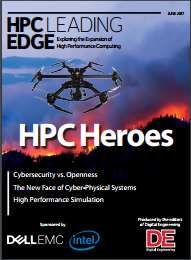HPC Leading Edge Magazine

When Hurricane Katrina devastated the Gulf Coast in 2005, it was not only the costliest and one of the deadliest natural disasters in the history of the United States, it also marked the first time drones were deployed during a disaster.
Using small, unmanned aerial vehicles (UAVs), the Safety Security Rescue Research Center (SSRRC) was able to help survey the Pearlington, MS, area for stranded survivors when all the roads into town were blocked. With video footage from the drones, emergency responders were able to determine that no one was trapped, and that floodwaters from a nearby river would not create any additional safety issues.
There have been significant advances in the technology used in disaster response since then, thanks to a combination of advanced robots and drones, social media and artificial intelligence (AI). Using drones equipped with cameras and sensors, relief agencies and first responders can safely survey affected areas, search for survivors, measure flood water levels, test for radiation, examine critical infrastructure (like power plants or dams) without endangering employees, and potentially even deliver some supplies. Download this report from Dell EMC and Intel® to learn more.
Intel Inside®. New Possibilities Outside.
Intel and the Intel logo are trademarks of Intel Corporation or its subsidiaries in the U.S. and/or other countries.
![]()

